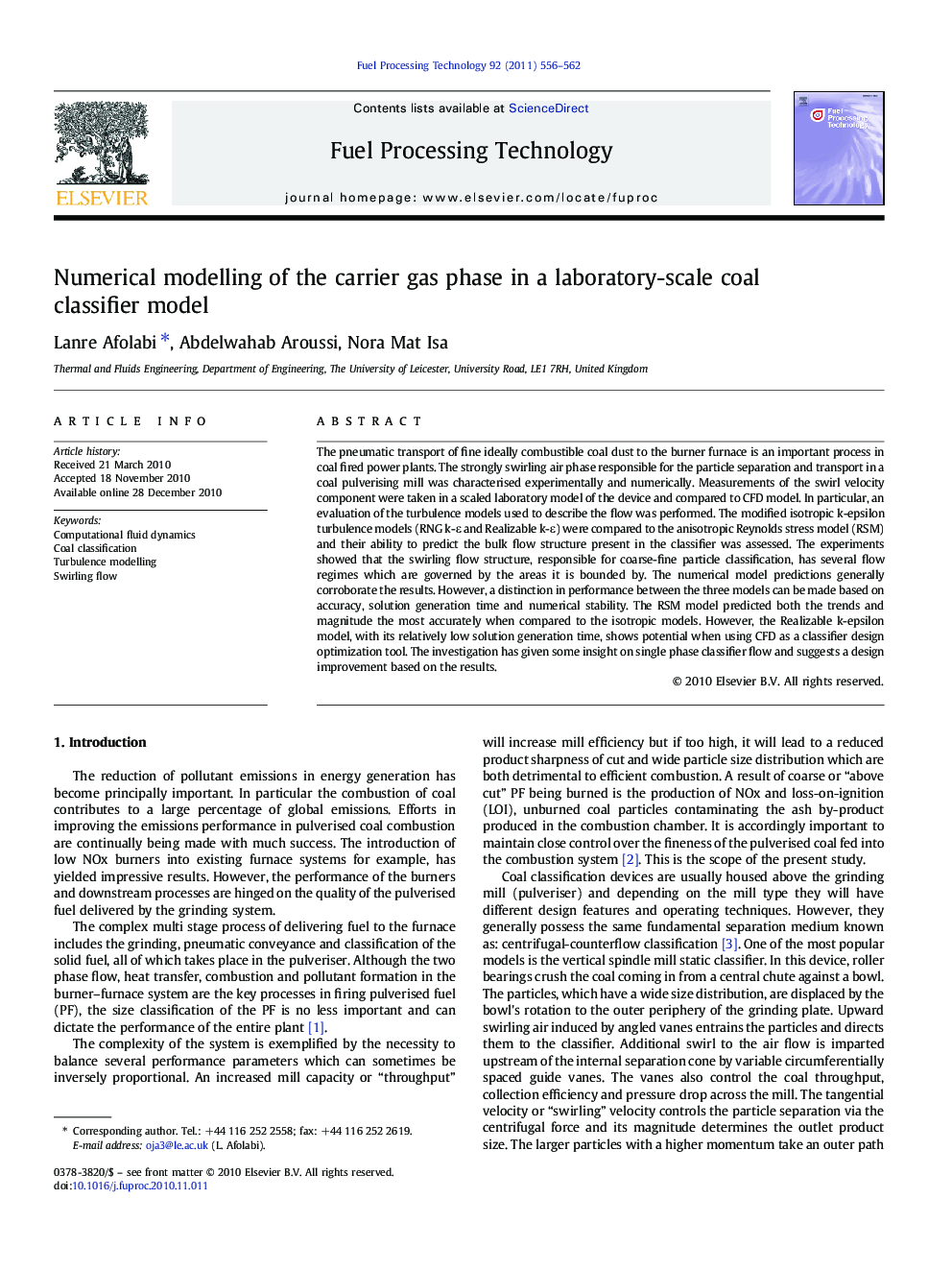| Article ID | Journal | Published Year | Pages | File Type |
|---|---|---|---|---|
| 10274774 | Fuel Processing Technology | 2011 | 7 Pages |
Abstract
The pneumatic transport of fine ideally combustible coal dust to the burner furnace is an important process in coal fired power plants. The strongly swirling air phase responsible for the particle separation and transport in a coal pulverising mill was characterised experimentally and numerically. Measurements of the swirl velocity component were taken in a scaled laboratory model of the device and compared to CFD model. In particular, an evaluation of the turbulence models used to describe the flow was performed. The modified isotropic k-epsilon turbulence models (RNG k-ε and Realizable k-ε) were compared to the anisotropic Reynolds stress model (RSM) and their ability to predict the bulk flow structure present in the classifier was assessed. The experiments showed that the swirling flow structure, responsible for coarse-fine particle classification, has several flow regimes which are governed by the areas it is bounded by. The numerical model predictions generally corroborate the results. However, a distinction in performance between the three models can be made based on accuracy, solution generation time and numerical stability. The RSM model predicted both the trends and magnitude the most accurately when compared to the isotropic models. However, the Realizable k-epsilon model, with its relatively low solution generation time, shows potential when using CFD as a classifier design optimization tool. The investigation has given some insight on single phase classifier flow and suggests a design improvement based on the results.
Related Topics
Physical Sciences and Engineering
Chemical Engineering
Chemical Engineering (General)
Authors
Lanre Afolabi, Abdelwahab Aroussi, Nora Mat Isa,
